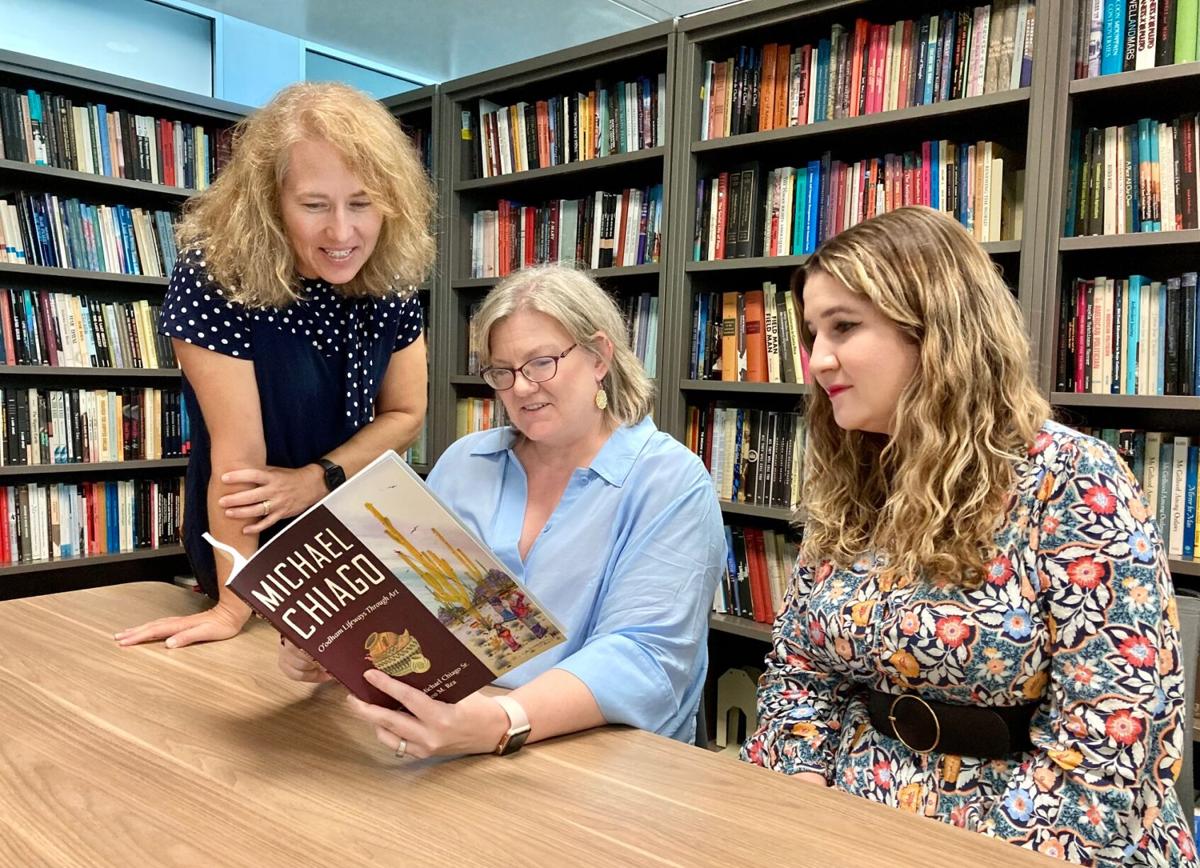A first-time visitor to the University of Arizona Press might assume they should approach from the left, park near the corner of Rigorously Academic and Sternly Professorial, and head for the nearest ivory tower.
If so, it may take awhile to find it.
True, UA Press is located right where it should be on the top floor of the university library, but good luck finding any of the old-school stereotypes connected to academic letters.
Its walls are glass, elbow patches are definitely not the style, and pipe-smoking was banned years ago. Even more revealing is the bookshelf in the office of Director Kathryn Conrad.
“University presses were created to connect academics across the world,” she began. “We’re important building blocks of scholarship, but I think people are surprised to learn how many of our books are of general interest; books anyone might want to read.”
With that she reached for a copy of “Discovering Mars“ published last year by Jim Bell and William Sheehan. She pointed to “Dance of the Returned,” a novel by Devon Mihesuah that explores Choctaw spirituality.
UA Press’s newest title is a collection of paintings by O’odham artist Michael Chiago, Sr., with the story behind each image explained by ethnobiologist Amadeo M. Rea.
“I’m guessing most readers of Arizona nonfiction have at least one of our books on their bookshelves at home,” Conrad said. “In almost every field I can think of, we have some books for academics and other books for people who are simply interested in those fields.”
This commitment to “popular scholarship” can be found in the organization’s DNA. The very first book published by UA Press was “A Pima Remembers,” a warm autobiography by George Webb that tells stories from his childhood life as a Pima Indian.
Surprisingly, UA Press does not publish textbooks. That said, many of its books — such as Thomas Sheridan’s landmark history, “Arizona” — can be found in college classrooms as well as living room shelves.
The father of UA Press was the indefatigable Dean of Anthropology Emil Haury. He pushed the proposal that was approved by President Richard Harvill in 1959. It was hardly a grand opening. The first requisition signed by Harvill authorized a desk, two chairs and a typewriter.
By then UA had become a world leader in earth sciences and the UA Press played an important role in sharing that expertise. Space science was another emerging specialty, and UA Press helped tell that story, too. One of its earliest releases was a “Rectified Lunar Atlas” that mapped the moon … all of the moon, including the never-before-visible “dark side.”
Today, UA Press majors in those subjects at the academic core of the university itself. Those include anthropology, archaeology, environmental science, space science, the borderlands and Southwestern history. It also specializes in Indigenous, Latinx and Latin American studies, and offers two poetry series: Sun Tracks and Camino del Sol.
Authors need not be connected to UA, but their topics must check one of those boxes — have an academic base — and be ready for an academic review.
“Peer review is a requirement of all university presses,” Conrad said. “A minimum of two experts must endorse every project. Peer review just makes our work more reliable.”
Changing times
Academic presses are feeling the same pressures squeezing the traditional publishing world, particularly the stresses of increased costs, production delays, and paper shortages.
So, like publishers everywhere, university presses are developing new delivery systems. Soon, we may be able to hear “Planetary Astrobiology“ on the car radio driving home.
“We’ve known for a while that a lot of people only read e-books,” Conrad said, “but the pandemic really drove home the need to develop other formats. When everything closed, professors couldn’t get books for classes. We couldn’t get books to all the people who needed them.”
UA Press has moved quickly to respond. Thanks to funding from the National Endowment for the Humanities, it has stepped up the digitization of its collection.
“Their grant should get us close to 500 e-books,” Conrad said. “It’s a start. Who knows how long it will take, but our long-term goal is to have every book available in every format.”
Here’s a tip: Assume this project will be completed sooner, not later.
These people aren’t shy about meeting challenges. Together, Conrad and her fellow staff members have more than 200 years in publishing. She herself has almost 40, the last 27 of them as the director at UA Press.
“When I got here in 1995, we weren’t even on campus,” Conrad said. “Our offices were near Park Avenue and Speedway Boulevard. We didn’t get on campus until 2011, so to say we’ve come a long way is true in more ways than one.”
If you find that one, original typewriter, please let one of them know.
FOOTNOTES
UA Press will celebrate the release of “Michael Chiago: O’odham Lifeways Through Art” Thursday, Aug. 25, at the Western National Parks Association, 12880 N. Vistoso Village Drive, in Oro Valley. Chiago will attend the unveiling, and the public is invited. The program will begin at 6 p.m. Learn more at tucne.ws/1l3y.
The Arizona Historical Society and UA Press are partners in a new book series called “Arizona Crossroads” that will explore Arizona’s role as a historical meeting place for cultures, language, music, art, geography and politics. The three principal editors are Katherine Morrissey of the UA, Anita Huizar-Hernandez of Arizona State University and Eric Meeks of Northern Arizona University. For submission information, visit tucne.ws/1l3x.





